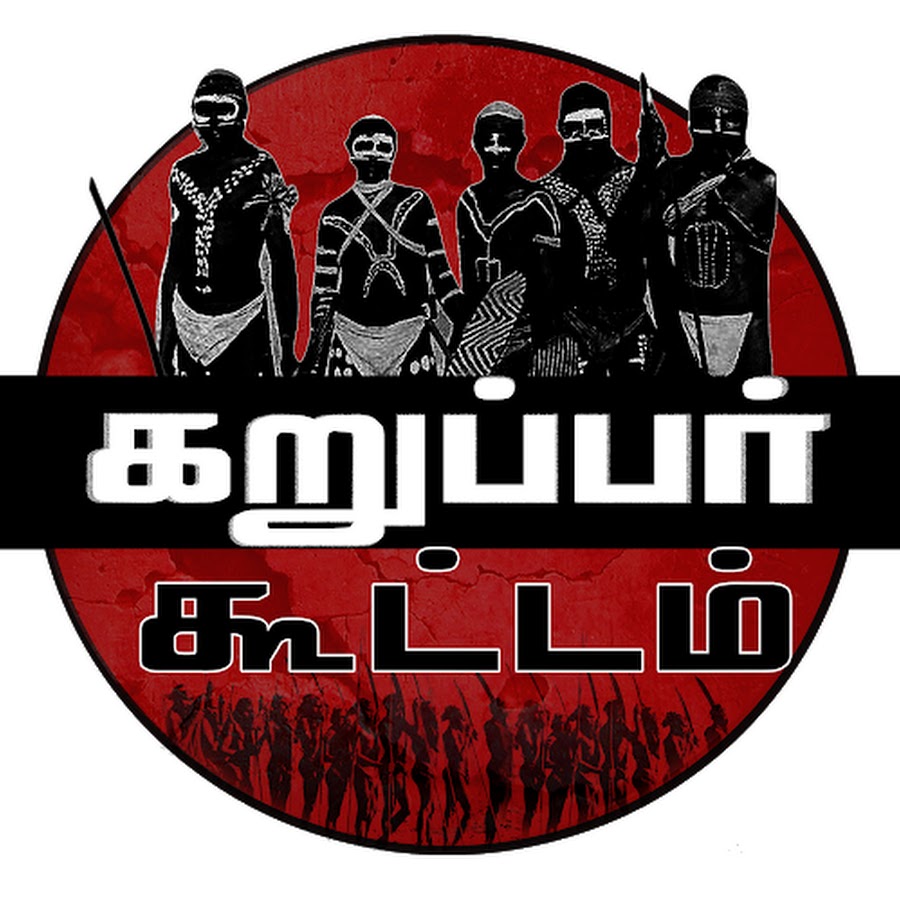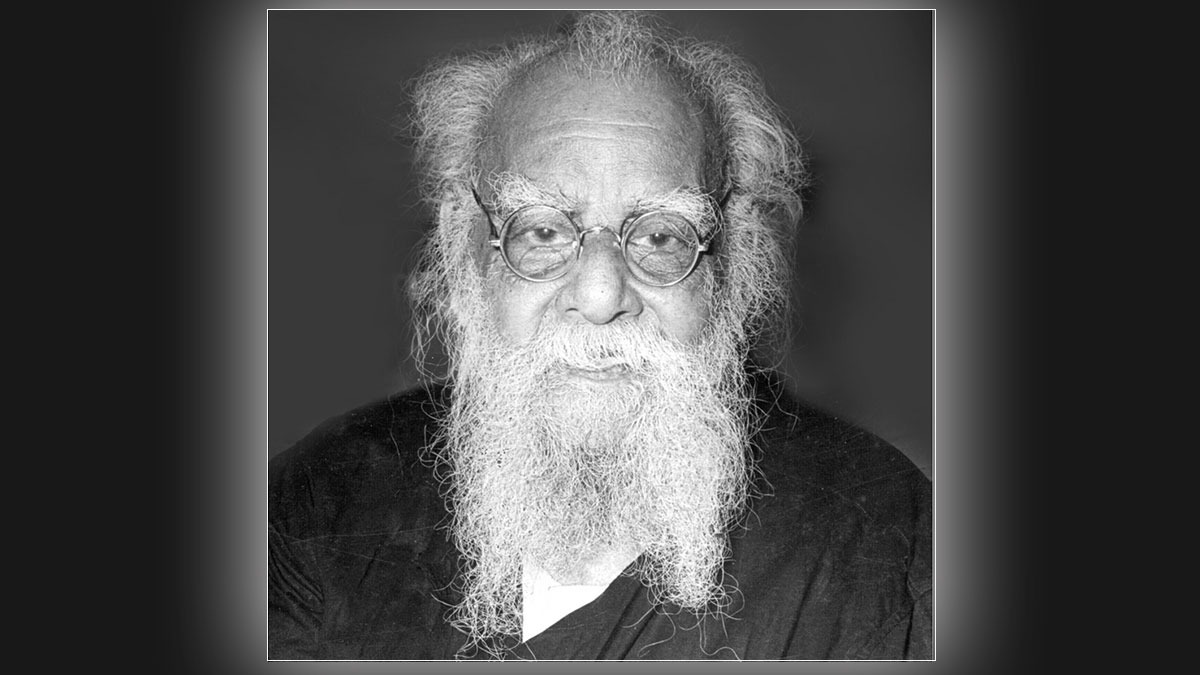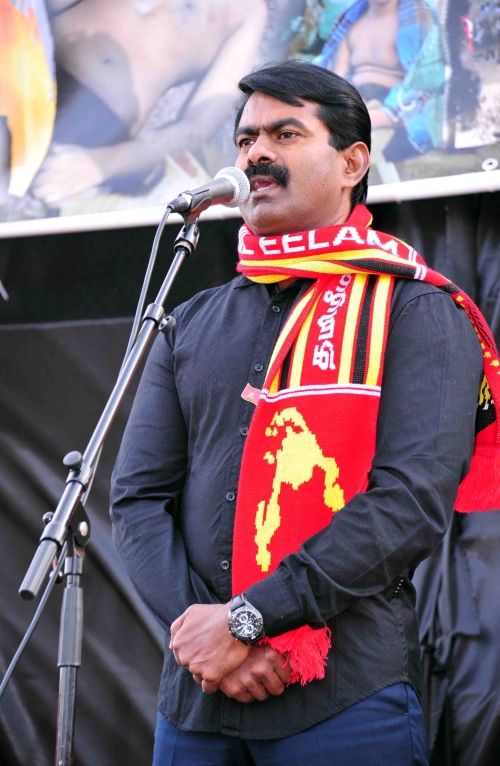
For a people whose brethren fought an armed war of liberation against a nation-state for 25 years, the sense of nationalism among the Tamils in India have been remarkably flaccid. The political culture of the state of Tamil Nadu has always been one where nationalism was never far below the surface, but was undermined sedulously by political parties that pretended to accentuate it. A recent incident in the state shines light on how this charade has given way to the rise of malign forces that are hell-bent on eroding the ‘Tamilness’ of the Tamils.
Karuppar Koottam controversy
A video published last week by a YouTube channel christened Karuppar Koottam became a cause célèbre. The subject of discussion in the video was the popular Tamil hymn Kandha Sashti Kavasam, composed in praise of Lord Murugan in the early 19th century. The host subjected the devotional song to withering scrutiny essentially berating its composer for the alleged vulgarity in the composition. This naturally hurt the sentiments of tens of millions of Tamils around the world to whom the Kavasam is a revered cultural and religious symbol. His obscene interpretation repulsed secularists and the devout alike. Before we consider the nub of this issue, a few words about the intellectual origins of the Karuppar Koottam are in order.
The tendency to mock conservative and superstitious religious beliefs was initiated by Periyar Ramasamy Naicker in the early 20th century. The entrenchment of British rule in India gave rise to the need for Indian foot soldiers to sustain the British Raj. At the top of a highly and rigidly stratified social order, the Brahmins and Kshatriyas parlayed their existing social privileges into lucrative positions at the British Indian administration. In the southernmost parts of the country, official positions were monopolized by the Tamil-speaking Iyers and Iyengars and the Malayalam-speaking Nairs. This effectively disadvantaged the rest of the population composed predominantly of oppressed castes.

Periyar railed against Brahmin domination and sought to mobilize the oppressed castes into a political collective into the identity of Dravidian as against the Aryans who included the North Indians and south Indian Brahmins who were together seen as the principal nemesis of the emancipation of the oppressed castes. To hammer home his point of Aryan hegemony and Dravidian subjugation, Periyar scorned religion and propagated atheism. His cultural movement gained huge support among humble Tamils in what was then Madras presidency and crystallised into a potent political force in the wake of independence in the form of the Dravida Munnetra Kazhagam (DMK). A Kannadiga by birth, Periyar articulated his ideas in his characteristically sardonic Tamil and the Dravidian ideology has dominated Tamil Nadu’s cultural and political life ever since.
It is in this lens that the Karuppar Koottam’s penchant for ridiculing long-standing religious beliefs must be seen.
The History
However successful Dravidian ideology might have been, its premise was fundamentally flawed. The word Dravidian, in a political sense, putatively refers to the people belonging to four major linguistic groups in South India; Tamil, Telugu, Malayalam and Kannada. Once the former British provinces were reorganised on the basis of language in 1956, each group had a state of their own. However, while Dravidian ideology would rule the roost in Tamil Nadu for the rest of the century and beyond, it held no significance in the other states. Its founding ideal was to replace the dominance of Brahmins and give political expression to the aspirations of the subaltern groups. This purpose was served in 1967 when the DMK defeated Congress in the Madras Assembly Elections and CN Annadurai, a people’s man, came to power in the state.
The core tenets of the ideology having been realised, Dravidianism should have ceased to be of political significance at this juncture. The Dravidian parties should have jettisoned the language of Dravidianism for good and started embracing Tamil nationalism. Instead, Dravidian rule muddied the waters by encouraging caste distinctions among Tamils further diminishing the prospect of the rise of nationalism. Riven by caste and devoid of a sense of common identity based on language, the Tamils grew up as a people who worshipped their political leaders whether or not they had a sound ideology. Dravidianism by its very name and nature thwarted the feeling of Tamil nationalism. Groups like Karuppar Koottam are offshoots of this Dravidian movement.
The consequences
The backlash to the Karuppar Koottam video has been strikingly unanimous. The Dravidian parties, Tamil Nationalist outfits and the national political parties alike have expressed their vehement condemnation of the obscene interpretation of a devotional song. One group, however, stood out from the rest of the crowd in its denunciation.
While every other group decried the video as offensive to Tamil religious sentiments, the Bharatiya Janata Party denounced it as offensive to Hindus. This is a crucial distinction. BJP has for long been scratching its head to make inroads into Tamil Nadu. The Tamil people, however, do not see Hinduism as the fundamental factor of their identity, which disfavours BJP’s plans in the state. On the other hand, many do not openly identify as Tamil nationalists either. For five long decades, the Dravidian parties helmed by charismatic leaders were their chosen representatives.
This is in stark contrast to the Tamils across the Palk Strait in Sri Lanka whose political identity was consolidated by the discrimination they faced at the hands of the Sinhalese. Tamil nationalism, which started initially as a reaction to decades of racist policies by the Sri Lankan state, grew to become an overwhelming political ideology amongst Eelam Tamils. Despite more than a decade since the Mullivaikkal massacres and the military defeat of the armed liberation group LTTE, Tamil nationalism continues to be a driving force on the island and across the Tamil political spectrum. Indeed, to this day, the major Tamil political parties continue to espouse nationalist languages and policies, differing only over the best way to attain regional autonomy.
However, the Tamils in India do not identify as Tamil nationalist and do not know what they want. The passing of the stalwarts of the two major Dravidian parties, Jayalalitha and Karunanidhi has put this dilemma in the spotlight. Exhaustion with these parties (which were involved in corruption scandals worth billions of rupees) and the absence of a superstar figure to dazzle them into a political stupor, has now led the Tamils to look for alternatives.

Having said that, it must be recognised that Tamil nationalism is not completely absent from the political scene either. The brutality of the end of the armed conflict in Sri Lanka in 2009 certainly generated a wave of sympathy among the people for their cousins in Eelam. Senthamizhan Seeman, a fiery Tamil nationalist, revived and relaunched the Naam Tamilar Katchi (We Tamils Party) in May 18, 2010 (the first anniversary of the Mullivaikal Massacre). This group, while gaining substantial following among youngsters across the state, still lacks support amongst the majority of the population. The mainstream media and the Dravidian parties, who have a vested interest in preventing any third option from becoming too much of a threat, have portrayed the NTK as a party of the riff-raff and Seeman as an impostor.
It is this vulnerable political situation that the BJP is seeking to exploit. By maintaining a pretence of ideology for over 50 years, Dravidian parties have made the ground conducive for an invasion from the north. No other group benefits from religious bigotry and communal tensions in India than the Hindu-nationalist party. The relatively secular Tamil society has proved very difficult for BJP to polarise. But this is not an insurmountable challenge. With Dravidian parties’ ideological vacuity and political incompetence exposed, the Tamil people are susceptible to fall for BJP’s shenanigans.
It has capitalised on the Karuppar Koottam video by organising vociferous protests against the perceived slander on Hinduism and inveighing against blasphemy towards Hindu gods. All this fulmination is not meant to cure the damage inflicted on the amour propre of the Tamils, but rather to communalise Tamil society.
The BJP’s ultimate goal is to make Tamil Nadu reflect its base in the Hindi heartland; an intolerance towards the minorities, Hindu jingoism and a culture of bigotry. In Tamil Nadu, this would mean the erosion of Tamil identity. In BJP’s ideal world, Tamils would cease to be Tamils and come to be identified as Hindus, Chola history would be saffronised and the language will be placed in an inferior position to Hindi and Sanskrit. The incipient Tamil nationalist movement has not made its presence felt beyond the youth in the state. Therefore, in the next assembly elections in 2021, Tamils face a choice between the devil and the deep blue sea; that between the ideologically bleached and congenitally corrupt Dravidian parties and the sinister BJP. Hurting ‘Hindu’ religious sentiments at this juncture, like the Karuppar Koottam video did, would only provide political ammunition to the Hindu nationalists.
